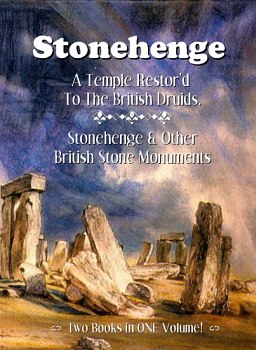
|
HiddenMysteries.com HiddenMysteries.net HiddenMysteries.org |
* * * * * * * * * * * * * * * * * * * * * * * * * * * * * * * * * * * * * * *
A word from our sponsor

Iron Age mystery of the 'Essex druid'
Sunday, April 27 2008 @ 03:07 PM CDT
Increase font Decrease font
This option not available all articles
Grave near Colchester could be the first burial site of an ancient mystic ever to be discovered in Britain
By Andrew Johnson
As sacred priests, their duties included teaching, law enforcement and possibly even burning people to death in giant wicker men. Druids dominated British culture with their mysterious magical rites in the centuries before the Roman invasion.
For such an important band of men, however – it could take 20 years to train to be a druid, according to some sources – hardly anything is known about them. That could be about to change now, though, after what is thought to be the first discovery in Britain of a druid grave.
The extraordinary find was made at the Essex village of Stanway, near Colchester. It is among a number of graves of eminent people interred around the time of the Roman invasion of Britain in AD43.
Following Queen Boudica's uprising in AD61, Emperor Claudius ordered the druids be wiped out. Their Anglesey stronghold and sacred groves were destroyed, along with their entire history.
In the grave, archaeologists uncovered a board game with the glass counters laid out, medical equipment – the earliest ever found – a tea strainer still containing some kind of herbal brew, and some mysterious metal poles.
The first find at the site was made in 1996. But now, after 12 years of painstaking digging and research, the final report into the unearthing suggests that the grave could be the only one of a druid ever found. The clues are not just in the objects buried with an obviously important man, but also in the way they are laid out. The metal rods, possibly used for divining, are in a specific order and near the surgical equipment – scalpel, surgical saw, hooks and forceps. There is also a jet bead, believed to have been seen as magical.
Writing in this month's British Archaeology magazine, the team of excavators from Colchester Archaeological Trust say: "It is hard to avoid the conclusion that he belonged to the stratum of late Iron Age society that comprised druids, diviners and healers. It is conceivable that this grave was the final resting place of a British druid."
Philip Crummy, director of the trust, remained cautious, adding that there may be other explanations. "In the report we draw the possibility that this man or woman was a druid," he said.
"The so-called druid could have been a doctor. The tea strainer contains artemisia pollen, which is commonly associated with herbal remedies. Healing is an attribute given to druids. We don't know what the metal rods are for, but we think they could have been used for divining. The question is whether all that stacks up to him being a druid. It could be – it was certainly somebody special."
independent.co.uk

http://www.hiddenmysteries.com/xcart/product.php?productid=17766

http://www.hiddenmysteries.com/xcart/product.php?productid=18042

http://www.hiddenmysteries.com/xcart/product.php?productid=18173
Comments (0)
* * * * * * * * * * * * * * * * * * * * * * * * * * * * * * * * * * * * * * *
A word from our sponsor

HiddenMysteries
Main Headlines Page
Main Article Page
Iron Age mystery of the 'Essex druid'
http://www.hiddenmysteries.net/newz/article.php/2008042715073780
Check out these other Fine TGS sites
HiddenMysteries.com
HiddenMysteries.net
HiddenMysteries.org
RadioFreeTexas.org
TexasNationalPress.com
TGSPublishing.com
ReptilianAgenda.com
NationofTexas.com
Texas Nationalist Movement